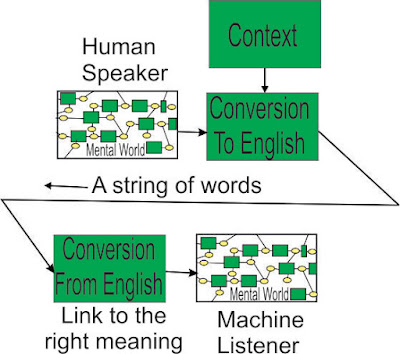Anti
Money Laundering Using Active Structure
The term "money laundering" refers
to the processes by which the illegal origins of funds are concealed, usually
through interactions with banks and businesses. An estimated 2.7% of the
world's global GDP is laundered annually, equating to huge government losses on
a global scale. These are the funds that allow criminal and terrorist
organizations to continue their operations financially unhindered. The massive
problem posed by money laundering has resulted in a huge market for anti-money
laundering software. Despite increasing investments in software development, an
estimated 90% of money laundering still goes undetected. So what's been going
wrong? Why has the existing software been performing so poorly?
Let's explore some of the approaches being
used. One can take an algorithmic approach and write a program to deal with the
issue. Such a program can even be quite complex and take into account a variety
of contingencies, but there are limitations to this approach. First off, the
program can only be written to address known
problems, meaning its horizons will be limited to only those issues its
creator has thought up. Secondly, the utility of the program ends as soon as
the situation changes. In the case of money laundering, once criminals begin to
figure out what the parameters of your algorithm are, they can find a way
around it and suddenly your program is worthless.
So what about machine learning approaches? These
have some advantages over the algorithmic approach in that the machine can,
given the right training data set and parameter specifications, potentially
come to address problems that the creator did not even recognize existed. The
problem with this approach is that the machine's competence will always be
constrained by the quality of the training data set it has been given. And no
matter how good your training data set is, the machine will never be able to
anticipate entirely new problems from it. At best, it can extend the logic of
the patterns it has extracted to new problems that arise. This may work at
first¾to a point. But once the rules change too drastically,
the machine is going to find itself completely helpless - it can't make new connections.
So why all the fuss over anticipating future
problems? When it comes to money laundering, we're not dealing with a stable
problem. We're competing against human intelligences, with all of the mental
flexibility they represent. Every time an optimal solution is found, it won't
be long before the competition finds a new evasion tactic and the process
starts all over again. That is the nature of competing with truly flexible
intelligences.
Where does that leave us? The situation I've
laid out points to one obvious solution: if we hope to achieve any consistent
level of automation in the detection of money laundering, the machine behind
that detection needs to be able to recognize when the situation has changed,
plot a new course to counter it, and modify itself to implement the new
strategy. The alternative approaches will always be playing catch-up.
What we're proposing is a dynamic machine
that is not limited by quantifiable data being fed to it. Rather than working
with 1s and 0s, the medium it works with will be the English language itself.
Because of this, it will have the ability to seek out its own data and find solutions
to problems it identifies without supervision. It can actively search out
problems and self-modify its structure to better counter them. Once properly
implemented, the machine we're proposing would be able to anticipate and
address entirely new problems.
And whatever parameters we start with, yes,
criminals can still find a way to avoid it. Say we begin with a simple tactic
like aggregating small transactions over a period of time to detect
structuring: criminals will soon learn what that time period is and counter by
spreading their transactions over a greater span of time. There's no getting
around that. Trying to catch money launderers is always going to be a
back-and-forth arms race. Our salvation here, and why our approach can be
better than that of others, is that our machine will modify itself as the
situation changes. If we get this right, every time criminals find a way around
a new rule our machine will adapt to the new situation and set up another wall
to block them. In a setting where the rules keep changing, only an adaptive
strategy – an intelligent strategy not based on data - can keep the advantage
for any amount of time, and that's what Active Structure has to offer.


Comments
Post a Comment